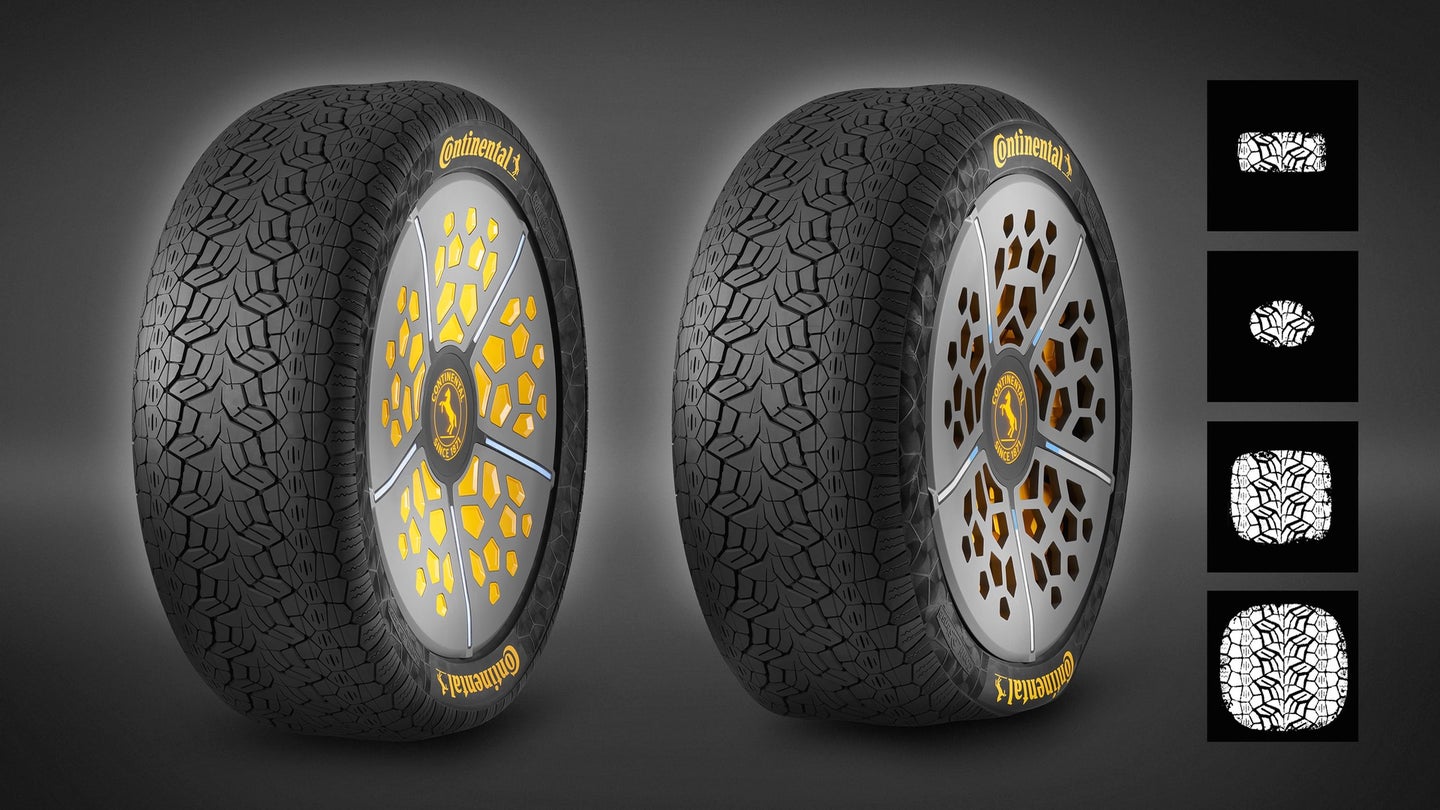Continental’s Tire Concept Can Adjust Pressure Automatically, Warn Drivers of Damage
These new features rely on sensors embedded in tires and rims.

Continental unveiled two prototype tire technologies at the 2017 Frankfurt Motor Show that could make future tires as smart as the cars they're attached to. Called ContiSense and ContiAdapt, they allow tires to send information to the driver and adapt to different conditions.
ContiSense relies on electrically-conductive rubber compounds, allowing electrical signals to be sent from sensors in the tire to the car. Sensors embedded in the tire monitor tread depth and temperature, and alert the driver if either parameter falls outside a predetermined safe range. The system also sends an alert if the tire is punctured. Continental claims this is faster than current systems, which only monitor loss of pressure.
The ContiSense system could also be used to monitor road conditions, according to Continental. Sensors can "feel" the temperature or slipperiness of the road and then pass that information onto the driver, the company claims.
Continental's second new prototype tech feature is ContiAdapt. It uses micro-compressors in the wheel to automatically adjust tire pressure, and is meant to be used with a variable-width rim. This allows the system to adjust the size of the contact patch and pressure based on road conditions. It could employ a low rolling resistance setting on dry stretches of highway for better fuel economy, or switch to a mode with low tire pressure and a larger contact patch to increase grip on slippery roads.
ContiAdapt can lower tire pressure to as little as 1 bar (14.5 psi), which Continental claims might be useful for getting a car out of a parking space in snow, or negotiating patches of black ice.
Continental incorporated both ContiSense and ContiAdapt into a concept tire unveiled in Frankfurt, but the company has no concrete plans to put either feature into production. But the technology seems like a good fit for increasingly sensor-laden cars.
